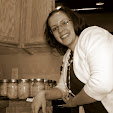Let's talk about building a 3-month supply of toiletries!!
First of all, what in the world is a toiletry??? A toiletry is any product used for grooming and personal hygiene. This includes the following:
Hand soap
Toilet paper
Facial tissue
Toothbrushes
Toothpaste
Body wash
Shampoo
Conditioner
Deodorant and Anti-Perspirant
Feminine products
Hair spray, gel, and other hair products
Make-up
Lotion
And so on...
Also, the following are important items to store, even though we may not think of them immediately when thinking of toiletries:
Diapers
Wipes
Medicine (including over-the-counter and prescription)
Some toiletries are more important than others. For example, it is more important to have a storage of hand soap before you stock-up on eye liner. Similarly, feminine products are much more important than hair spray.
That being said, the first thing to do is make a list starting with the most important items. (The list above is roughly in order of what I feel is most important.
Next you need to decide how much you want to store. Here's my list and amounts for my 3-month supply:
Hand soap- One bar of soap per person AND one 48-64 oz. container of liquid hand soap.
Toilet paper- 90 rolls (one per day).
Facial tissue- One box per person.
Toothpaste- One tube per person. (Again, these are in my 72-hour kits.)
Body wash- One extra bottle per person.
Shampoo- 1/2 bottle per person.
Conditioner- 1/2 bottle per person.
Deodorant and Anti-Perspirant- 2 for each adult.
Feminine products- 100 count of your product of choice.
Hair spray- One extra.
Gel- 3 bottles.
Make-up- One extra of most used items.
Lotion- One large bottle or several small ones.
Diapers- The number of diapers you use usually gets a little smaller as your child gets older. If you are honestly wanting a 3-month supply, you will want to store about 360 diapers for toddlers and about 500 diapers for infants. These numbers are even a little high for me. Maybe just having two extra packs or boxes on hand would be a good start. Because of size issues, you won't want to store just one size.
Wipes- One extra box (about 10 packs) is good. My goal is to have 3 boxes on hand soon. (I will have two in diapers for a while.)
Medicine- In my
72-hour kits, I try to always have one, unopened adult
Acetaminophen and
Ibuprofen as well as one of each of these for children. If you have an
infant, you may want to store an extra one of each of these as well. Although these are in my 72-hour kit, they will last me for several months if I can't get to the store so they work for my 3-month supply as well. As far as presciption meds, I only have about a week's worth in my 72-hour kit. Depending on your needs, you may be able to get an extra presciption or two to have extra on hand.
Many of these products are generally low priced at a place like Wal-Mart or Costco and Sam's Club, but there are a few that you can watch for deals on Amazon or at your local grocery stores. Smith's will often have deals on toothbrushes and toothpaste. Amazon sometimes sells large amounts of toilet paper and facial tissues for good prices.
Here's a price list:
Hand soap- Bar- $.13/oz or about $.50 per bar. Liquid- abt $.70/oz.
Toilet paper- Around $.20 per single roll.
Facial tissue- $.50- $1 per box.
Toothbrushes- Less than $2 per brush.
Toothpaste- Abt $.20/oz or about $1 a tube.
Body wash- $.10-.15 per oz.
Shampoo & Conditioner- Abt $.05/oz or less than $1 for a small bottle.
(Suave and VO5 go on sale at my local grocery store about once a year.)
Deodorant and Anti-Perspirant- From $2-4 per bar, depending on brand.
Feminine products- From about $.15-.20 per item.
Hair spray- From $.15-.20 per oz.
Gel- Abt $1 per bottle. (My husband actually like the brand from the dollar store.)
Diapers & Wipes- See
THIS post.
Medicines- prices vary.









.jpg)














